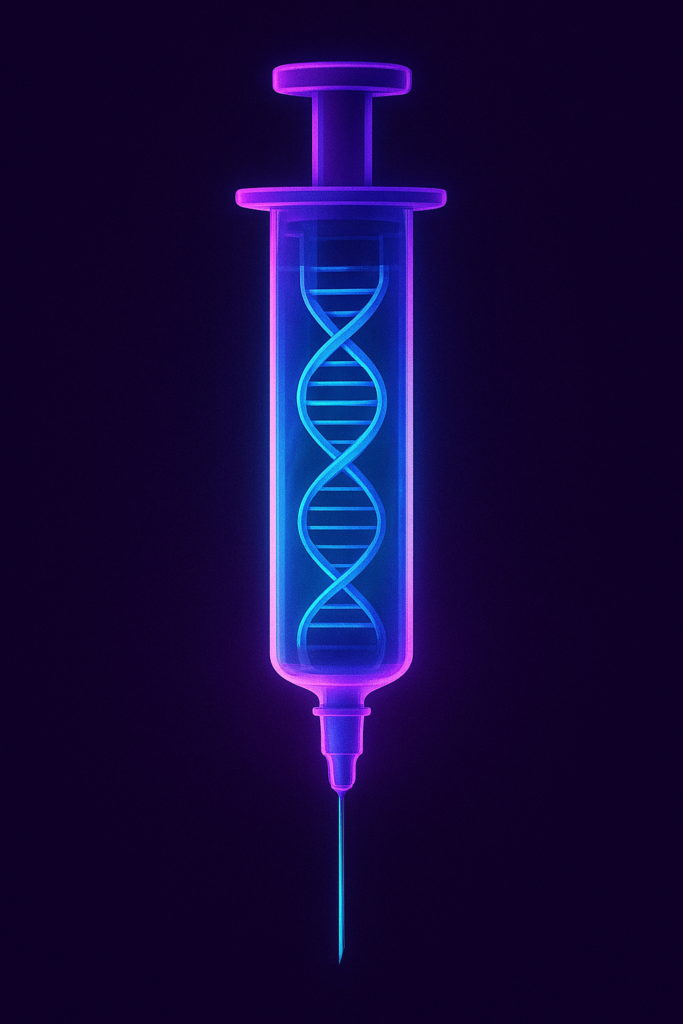The secret to your sight is woven directly into the fabric of your DNA. While external factors like screen time and nutrition play roles in vision health, many of the most severe and complex vision issues originate from a genetic blueprint passed down through generations. Understanding the mechanisms of inherited eye diseases is not just an academic exercise; it is the cornerstone of effective preventative vision care, allowing you to intercept potential vision loss before it manifests.
This comprehensive guide serves as your authoritative resource for navigating the complex world of ocular genetics. We will explore the critical role of genes, detail the most common inherited eye diseases (from Retinitis Pigmentosa to hereditary Glaucoma), and clarify how groundbreaking advancements in genetic testing and therapy—like the revolutionary Luxturna—are transforming the prognosis for millions globally. Protecting your long-term vision health begins with understanding your unique genetic roadmap.
1. What Are Inherited Eye Diseases? The Role of Genes
Inherited eye diseases represent a broad spectrum of conditions where a mutation in one or more genes directly affects the structure or function of the eye. They are distinct from acquired conditions (like typical age-related cataracts) because the predisposition, if not the disease itself, is present from birth.
Mendelian vs. Complex Inheritance
Not all genetic diseases are created equal, and understanding the inheritance pattern is crucial for diagnosis and counseling:
- Mendelian (Monogenic) Inheritance: These conditions are caused by a mutation in a single gene. Examples include Leber’s Hereditary Optic Neuropathy (LHON) or specific forms of Retinitis Pigmentosa. The inheritance patterns are clear: autosomal dominant, autosomal recessive, or X-linked.
- Complex (Polygenic) Inheritance: These are caused by a combination of mutations in multiple genes plus environmental and lifestyle factors. The most common examples are Age-Related Macular Degeneration (AMD) and Primary Open-Angle Glaucoma (POAG). These are harder to predict but represent the vast majority of common vision loss conditions.
Did You Know?
The first FDA-approved gene therapy for an inherited disease was Luxturna, a treatment specifically designed to address a form of Retinal Dystrophy caused by mutations in the RPE65 gene. This breakthrough in targeted therapy offers hope for many other currently untreatable **inherited eye diseases**.
The Importance of Early Genetic Screening
For many inherited eye diseases, the damage is irreversible once symptoms appear. Early genetic screening offers a critical window for intervention. Identifying a high-risk mutation allows ophthalmologists to implement a proactive management plan, which may include specialized nutritional supplements, avoidance of specific environmental triggers, or preparation for emerging gene therapies.

2. Common Inherited Eye Diseases and Their Mechanisms
Understanding the genetic pathway of specific conditions illuminates why treatment is so challenging, yet also where the future of genetic medicine lies.
Retinitis Pigmentosa (RP) and Photoreceptor Death
Retinitis Pigmentosa (RP) is the most common form of inherited retinal degeneration, affecting approximately 1 in 4,000 people.
- The Mechanism: RP is a group of related disorders caused by over 100 different gene mutations. These genes code for proteins essential for the survival and function of photoreceptor cells (rods and cones). The disease typically causes the rods (responsible for night and peripheral vision) to die first, leading to night blindness and tunnel vision.
- Genetic Basis: RP can follow any Mendelian pattern, making genetic testing essential to pinpoint the exact causative mutation for prognosis and potential gene therapy candidacy.
Hereditary Glaucoma and Ocular Pressure
While most Glaucoma is complex, Juvenile Open-Angle Glaucoma (JOAG) and some adult forms are strongly hereditary.
- The Mechanism: Glaucoma involves damage to the optic nerve, usually due to abnormally high intraocular pressure (IOP). Hereditary forms often involve mutations in genes like MYOC or CYP1B1, which affect the development or function of the drainage angle (trabecular meshwork) in the eye, leading to a buildup of fluid and pressure.
- Proactive Action: Family members of those diagnosed with hereditary Glaucoma must undergo aggressive screening for early signs, as early treatment (drops, lasers, or surgery) can prevent irreversible blindness.
Leber’s Hereditary Optic Neuropathy (LHON)
LHON is a rare condition that causes acute, severe vision loss, usually in young adult males. It is unique among inherited eye diseases:
- The Mechanism: LHON is caused by mutations in the mitochondrial DNA, meaning it is only inherited from the mother. The mutations impair the energy production within the optic nerve cells, causing the nerve fibers to die.
- The Impact: Vision loss is typically sudden, painless, and severe, often leading to central scotomas (blind spots). New therapeutic approaches are focused on bypassing the damaged mitochondria or replacing the missing protein function.

3. Genetic Testing: When and Why You Need It
Genetic testing has become an indispensable tool in the clinical management of inherited eye diseases. It moves the diagnosis beyond merely classifying symptoms to identifying the precise molecular cause of the disease.
Types of Genetic Tests and Interpretation
Genetic tests for ocular diseases vary in scope and complexity:
- Single-Gene Testing: Used when a physician strongly suspects a specific, known Mendelian disorder (e.g., testing for the RPE65 gene in certain retinal degenerations).
- Panel Testing: The most common approach. It screens hundreds of genes known to be associated with inherited eye diseases in a single test, dramatically increasing the diagnostic yield.
- Whole Exome Sequencing (WES): Used in complex or atypical cases, WES analyzes the entire protein-coding region of the genome.
Counseling and Family Planning
A positive genetic test result carries profound implications. Genetic counseling is mandatory to help families understand the risk of recurrence, the specific prognosis based on the gene mutation, and family planning options (such as preimplantation genetic diagnosis, PGD). This comprehensive approach ensures that genetic information is used ethically and constructively.
5. FAQ & Conclusion
Frequently Asked Questions (FAQ) about Inherited Eye Diseases
- Q: How common are inherited eye diseases?
- Q: If I have a genetic mutation, will I definitely lose my vision?
- Q: Is there a cure for Retinitis Pigmentosa or LHON?
- Q: Can genetic testing be done on children?
Conclusion: Taking Control of Your Genetic Destiny
The landscape of inherited eye diseases has fundamentally shifted. For the first time, individuals facing genetic predisposition can move from passive waiting to proactive intervention. The combination of comprehensive genetic screening, personalized management plans, and the breathtaking reality of gene therapy (like Luxturna) offers a powerful pathway to preserve vision. Understanding your genetic profile is no longer a luxury—it is the ultimate defense against vision loss. Embrace the knowledge your DNA provides, and work with specialists to secure your long-term visual future.

